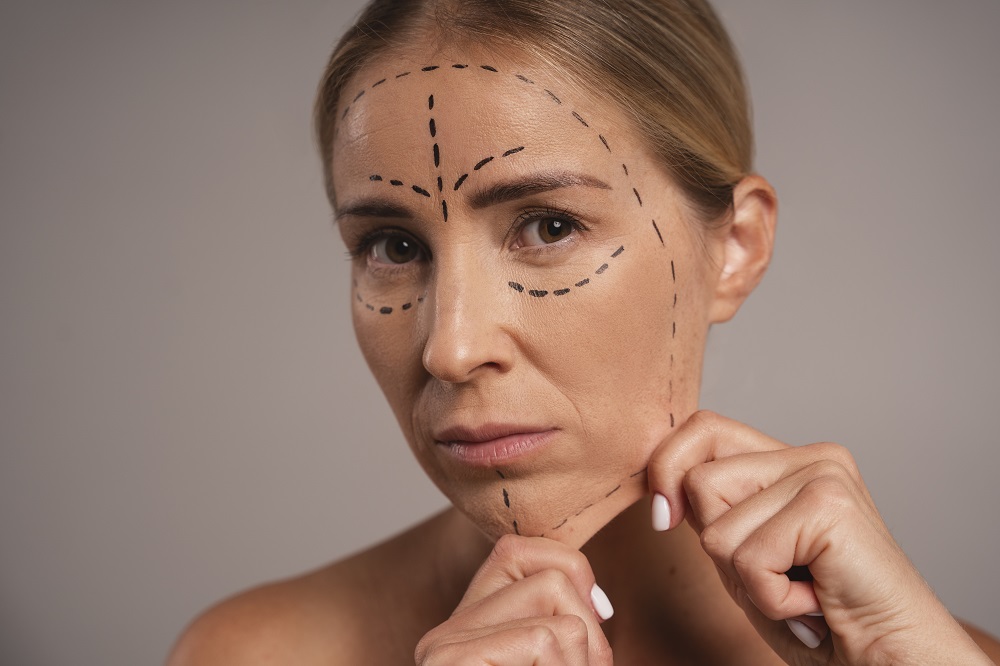
Weight loss is nothing new, and neither are its side effects. With obesity at an all-time high, men and women alike are more determined than ever to find rapid and effective weight loss solutions and a path to better health, well-being, and confidence.
While weight loss medications and clinics have been around for decades with variable amounts of success, the surge in prescription semaglutide weight loss drugs over the last couple of years is unprecedented. The most widely recognized prescription brand is Ozempic, however other brands such as Wegovy, Mounjaro, and Rybelsus are also very popular, as are their compounded counterparts. Originally intended to treat type 2 diabetes, the peptides in semaglutide medications work by assisting the pancreas to release the correct amount of insulin when blood sugar levels are high. The insulin helps remove sugar from the blood to other bodily tissues where it is used for energy.
Needless to say, these medications, often easily obtained with online prescriptions, have been tremendously successful. In the journey to shrink our waistline and slip into that little black dress with ease, the side effects are too often stored on the mental back burner for another day. Weight loss can be a physically and emotionally exhausting journey, so it’s not uncommon to be singularly focused on the scale or fitting into jeans without gasping for air. With so much (or little) on our plate, who has the mental energy to consider what significant weight loss can do to our skin?
The sad truth is that rapid or excessive weight loss can have a devastating effect on our skin for which many are unprepared. This often includes loose skin on the neck and jowls, loss of tone and texture, pre-mature wrinkles and folds, a dull and lackluster appearance, and loss of elasticity and buoyancy. This happens on the body as well, especially in areas where there is little to no muscle mass or prone to age-related laxity.
As discouraging as this all may seem, there are solutions and even preventative measures you can use on your weight loss journey. We had the privilege to speak with Dr. Vishal Verma M.D. about the physiological ramifications of weight loss on the skin, tips on mitigating its severity, and the best non-surgical options for correction and renewal. Dr. Verma is the co-founder and Medical Director of Revive Med Spa – one of the leading and most prestigious med spas in the country with 11 locations in California, including the soon-to-open spa in Laguna Niguel.

Can you explain why and what happens to the skin after significant weight loss?
When a significant amount of weight is lost, especially if it’s done rapidly, the skin may not have enough time to adapt to the changes in body size. This can lead to a loss of elasticity, causing it to sag or appear loose. Additionally, stretch marks become more apparent, particularly in areas where the skin has been stretched due to excess fat. These marks occur when the skin stretches beyond its normal limits, causing the collagen and elastin fibers to break. Cellulite may also become noticeable after weight loss because the fat cells that were previously stretched may remain beneath the skin’s surface, contributing to the dimple-like appearance.
Where is loose skin most common after weight loss?
- Abdomen: The abdomen is one of the most common areas for loose skin after weight loss, particularly if there was a significant amount of fat stored in this area.
- Arms: Excess skin on the upper arms can occur after weight loss. The skin may hang loosely, particularly in the area between the elbow and shoulder.
- Thighs: Loose skin on the thighs can be a concern after weight loss, especially in the inner thigh area.
- Breasts: Both men and women may experience loose skin in the chest area after significant weight loss. This can lead to sagging or deflated-looking breasts, particularly if a large amount of weight is lost from the chest area.
- Face and Neck: While less common, some individuals may experience loose skin on the face. This can lead to a loss of facial volume and definition, as well as the appearance of wrinkles or sagging skin.
What are other skin issues besides skin laxity? Does significant weight loss cause more wrinkles and folds, less even texture, etc?
Significant weight loss can impact the skin in various ways beyond just skin laxity. Rapid weight loss can contribute to the development of wrinkles and folds, particularly in areas where the skin has lost volume. This can occur in the face, neck, and other areas of the body, leading to the appearance of fine lines, creases, and folds. Additionally, weight changes can affect the texture of the skin, leading to unevenness or roughness. This can be due to factors such as dehydration, loss of collagen and elastin, and changes in skin cell turnover. The skin may appear less smooth and youthful, with areas of roughness or irregularity. Additionally, dehydration, nutrient deficiencies, and changes in skin metabolism associated with weight loss can contribute to a dull or lackluster complexion. The skin may appear less radiant and vibrant, with a lack of luminosity and a healthy glow.
What are some treatment options you suggest to a patient after weight loss?
After significant weight loss, patients may consider various treatment options to address skin concerns and improve overall body contours that are non-surgical.
- Body Contouring: Through weight loss, the volume of fat has been reduced but the cells remain. Treatments such as CoolSculpting target the fat in treated areas to be fully eliminated by the body. The ultimate result is a tightening of underlying tissues and improved body contour.
- Skin Tightening Procedures: Treatments like Morpheus8 – a microneedling, radiofrequency (RF) therapy, and laser skin tightening, can help improve skin laxity and firmness by stimulating collagen production and tightening the skin’s surface. These treatments are less invasive than surgery and may be suitable for patients with mild to moderate skin laxity.
- Dermal Fillers and Injectables: Dermal fillers can help restore lost volume in the face and other areas affected by weight loss. Neurotoxins can also be used to relax muscles and smooth out wrinkles and lines, providing a more youthful appearance.


Are there measures one can take to stop or minimize loose skin while losing weight?
It is very difficult to completely prevent loose skin during weight loss, but there are ways to minimize its effects and improve skin elasticity:
- Aim for a gradual and steady rate of weight loss rather than rapid or extreme methods. Losing weight slowly allows the skin to adjust more gradually to changes in body size, reducing the likelihood of excess skin.
- Proper hydration is essential for maintaining skin elasticity. Drink plenty of water throughout the day to keep your skin hydrated and supple.
- Incorporate strength training exercises into your fitness routine to build muscle mass. Strengthening the muscles beneath the skin can help improve its appearance and reduce the appearance of sagging.
- Keep your skin well-moisturized with hydrating lotions or oils to improve its elasticity. Also, protect your skin from sun damage by wearing sunscreen daily and avoiding prolonged sun exposure. UV radiation can accelerate skin aging and reduce elasticity.
Does age play a role in the physical effects of weight loss?
Unfortunately, age plays a significant role in the physical effects of weight loss. As we get older our muscle mass, bone density, and skin elasticity naturally decrease. Metabolism also slows down which makes it more challenging for older individuals to lose weight.
What skin issues cannot be addressed without surgical intervention?
Depending on the amount of weight lost and recoil in the skin, some people require surgical removal of excess skin. This may occur when weight loss is in excess of 70-100 lbs.
Are there any new treatments on the horizon that will correct skin laxity?
What is most important to us at Revive Med Spa is providing solutions that produce real results. In addition to our core offerings, we are excited about emerging regenerative treatments that stimulate the body to naturally produce collagen, elastin, and fat in treated areas to help correct the degradation that commonly occurs with aging. Specifically, we offer Sculptra and dilute Radiesse to help stimulate collagen and elastin, and Renuva to restore fat cells. The other area we have been focusing on is using advanced protocols combining Morpheus8 with BBL Hero and non-ablative laser resurfacing to bring skin rejuvenation to a new level. When we combine all of the latest tools, techniques, and technologies, the results are truly amazing for what can be accomplished non-surgically. Regenerative therapies continue to advance and there is no doubt new technologies and therapies will continue to emerge to address skin laxity.
About Dr. Vishal Verma
Dr. Verma earned both his Bachelor of Science and Doctorate of Medicine in the prestigious accelerated 6-year Honors Program in Medicine (HPME) at the University of Miami. He continued his medical training with a residency in Radiology at the University of Chicago and an MRI fellowship at the University of California San Diego. His passion and talent for aesthetics led to the creation of a truly unique spa concept incorporating both medical and non-medical beauty services. Revive is recognized as one of the top medical spas nationally. Dr. Verma strives to stay at the forefront of aesthetic medicine. He has served on the Allergan Medical Aesthetics Advisory Board, which serves to provide leadership in partnering for the future of aesthetics and focuses on future innovations in products and programs.
Revive has continuously set itself apart through cutting-edge aesthetic technologies, a wide breadth of services and experienced professionals continuously educated on the latest trends in their specialties since 2006.
Revive is in the top 0.01% of medical spas in the nation and has been awarded the prestigious Black Diamond Award by Allergan, the manufacturer of Botox, Juvéderm, and Latisse. Revive is also the #1 provider of Morpheus8 and CoolSculpting in California and is in the top 10% of Morpheus8 & Coolsculpting providers in the nation. Their elite ranking means our services are administered by a medical spa staff who truly are the best of the best. Revive provides a wide range of aesthetic services to fit your needs. Revive features leading brands in medical-grade skincare, including SkinMedica, Alastin, SkinCeuticals, and Skinbetter Science.

